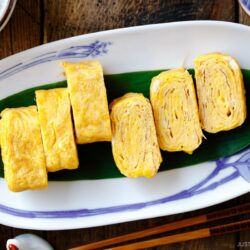
3-Ingredient Simple Tamagoyaki
Learn how to make the iconic Japanese rolled omelette with my step-by-step tutorial and video. My 3-Ingredient Simple Tamagoyaki recipe requires no dashi and is ready in just 15 minutes! Enjoy this savory-sweet dish in your breakfast or bento lunch.
Equipment
Ingredients
- 3 large eggs (50 g each w/o shell)
- ½ Tbsp sugar (for a sweeter tamagoyaki, use up to 1 Tbsp)
- 1 pinch salt
- 1 tsp usukuchi (light-colored) soy sauce (or regular soy sauce; use GF soy sauce for gluten-free)
- 1 Tbsp water (optional; for a fluffier omelette)
For Cooking
- 1 Tbsp neutral oil (plus more, if needed)
Instructions
- Gather all the ingredients. In this recipe, I show you two methods—one using a cast iron tamagoyaki pan and the other using a carbon steel frying pan. Although I avoid nonstick pans, it is easier to make tamagoyaki in a nonstick pan, if you‘d like to use one. Read more about tamagoyaki pans in the blog post.
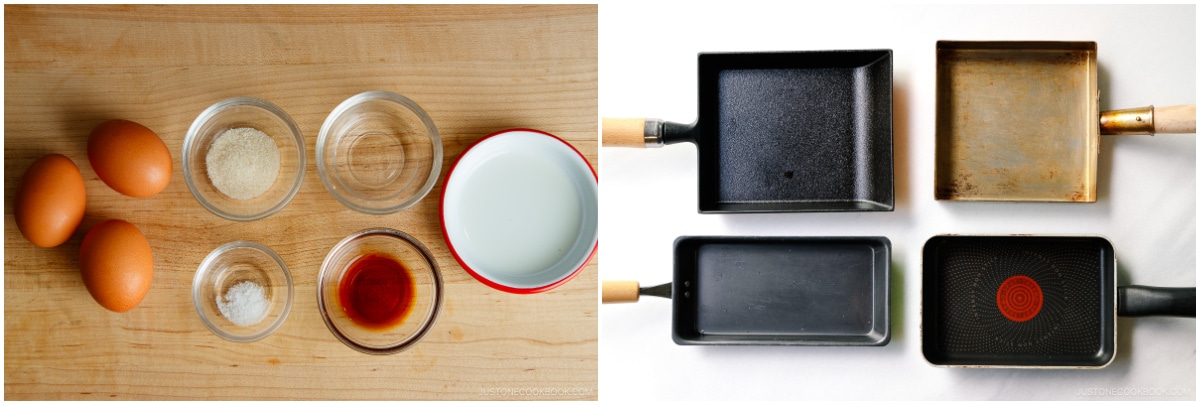
To Prepare the Egg Mixture
- To a measuring cup or bowl with a pouring spout (I love this HARIO bowl), add 3 large eggs (50 g each w/o shell) and ½ Tbsp sugar. I like to add 1 pinch salt as well. Then, add 1 tsp usukuchi (light-colored) soy sauce and 1 Tbsp water.
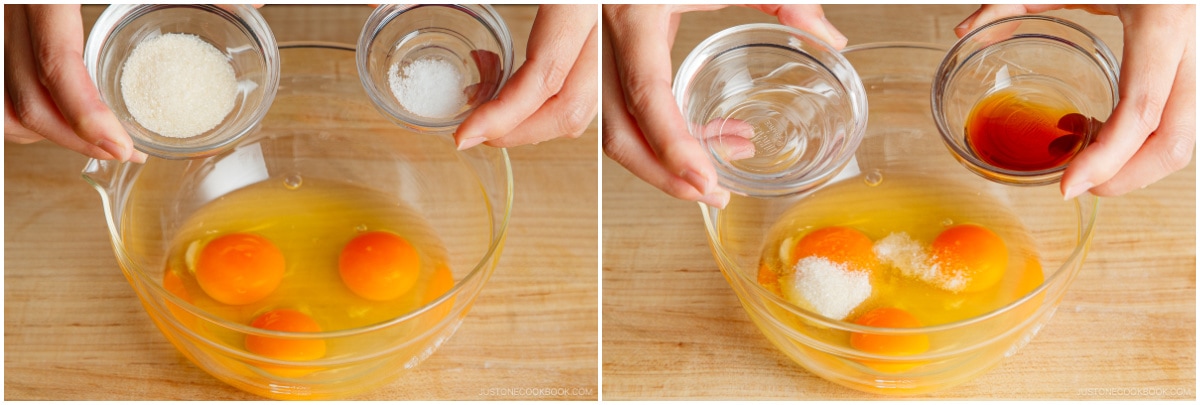
- Gently “cut“ the eggs using cooking chopsticks in a zigzag motion and with the chopstick tips touching the bottom of the mixing bowl. Do not overmix or incorporate air into the eggs. For a refined texture and even coloring, you can pass the egg mixture twice through a fine-mesh sieve (optional).
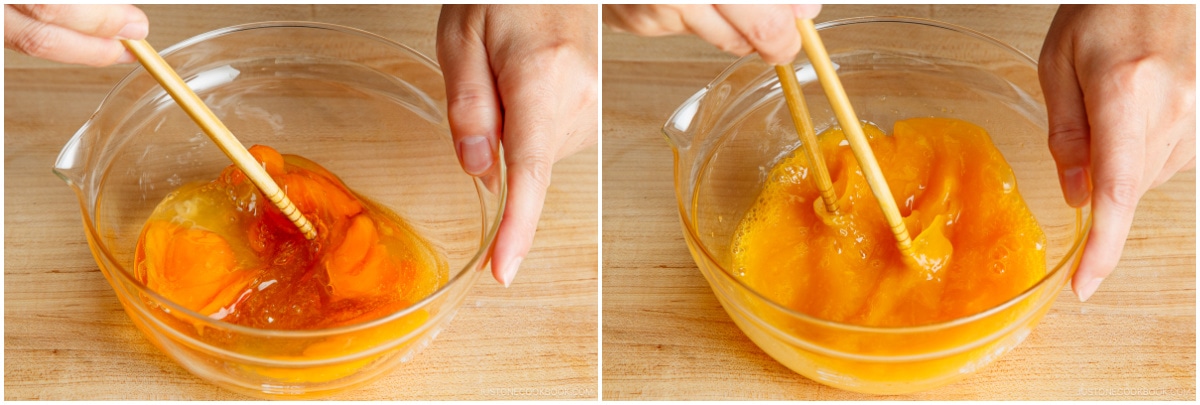
To Cook in a Tamagoyaki Pan (Method 1)
- Cook the first layer. Heat the tamagoyaki pan over medium heat. Dip a silicone brush or folded paper towel in some neutral oil and apply a thin layer to the pan. To check if the oil is hot enough, use the “sizzle“ test: Put a drop of the egg mixture in the pan; when you hear a sizzling sound, the pan is ready.
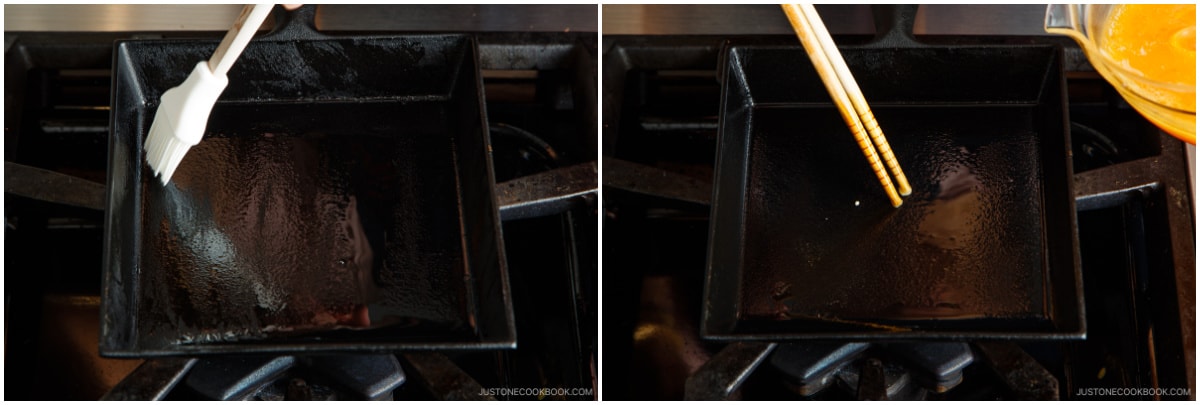
- Pour in a thin layer of egg mixture. Quickly tilt the pan to coat the entire cooking surface with egg. Add just enough to fill the pan and don‘t overpour. For my pan size, I had enough to cook 4 thin layers of egg mixture; you may have more or fewer layers, depending on your pan size.
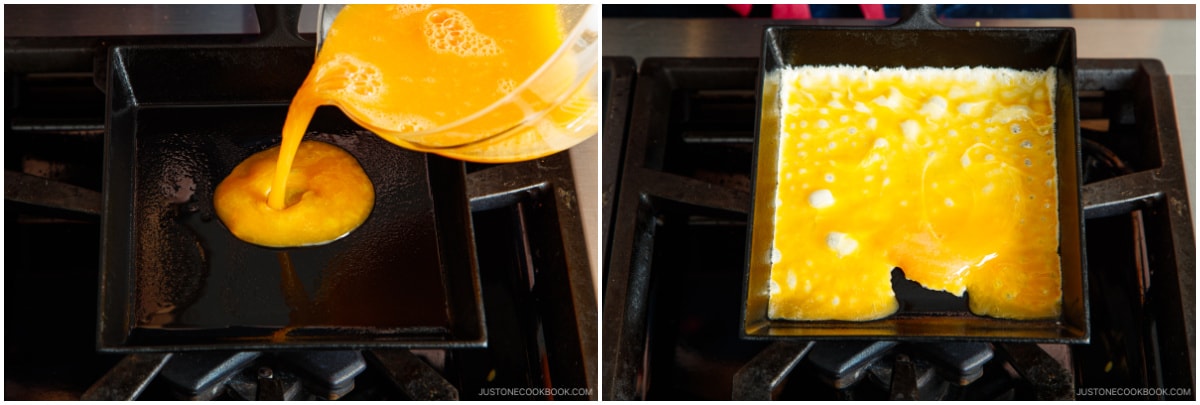
- Pop any air bubbles (I use cooking chopsticks). Tilt the pan again to distribute the egg mixture evenly.
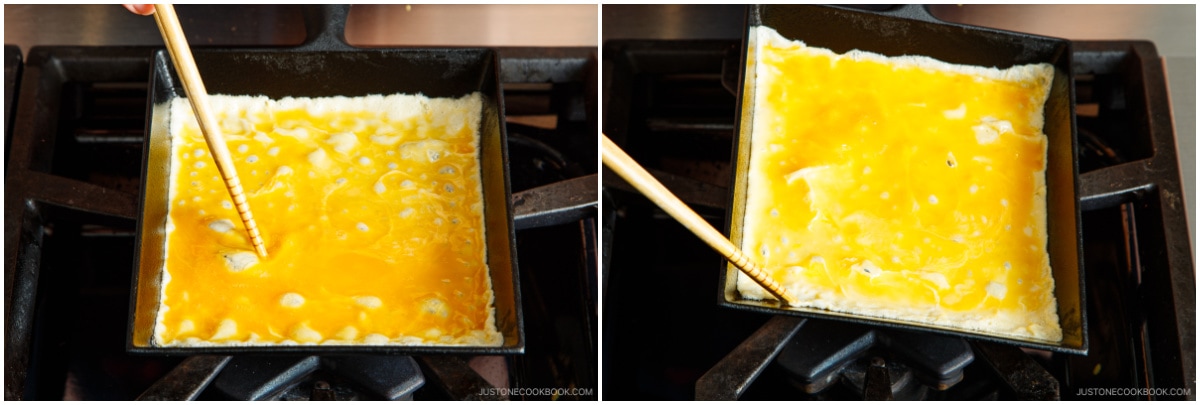
- Once the bottom of the egg has set and the top is soft but no longer runny, start rolling the egg into a log shape with a spatula (or cooking chopsticks). Start from the far side of the pan and roll toward the pan handle. Don‘t worry about making a perfect roll at this stage.
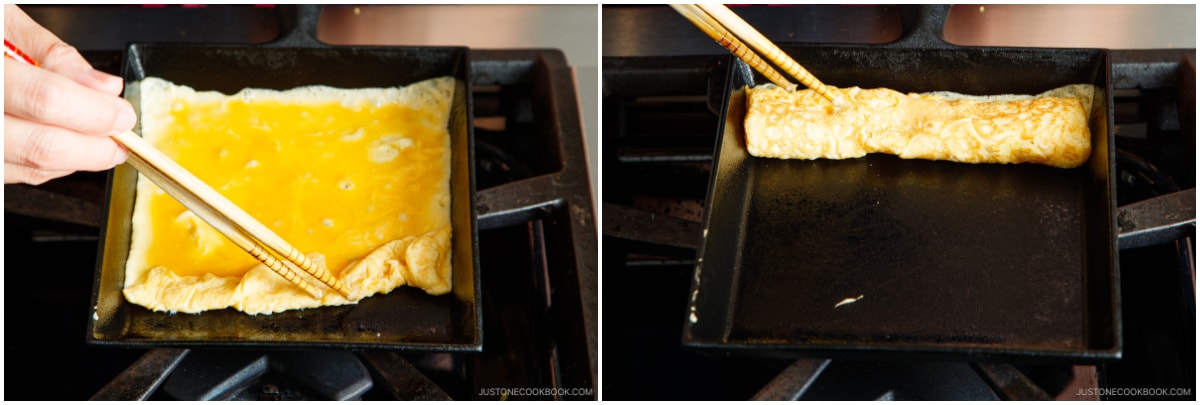
- Lightly grease the far side of the pan. Then, push the omelette back to the far side.
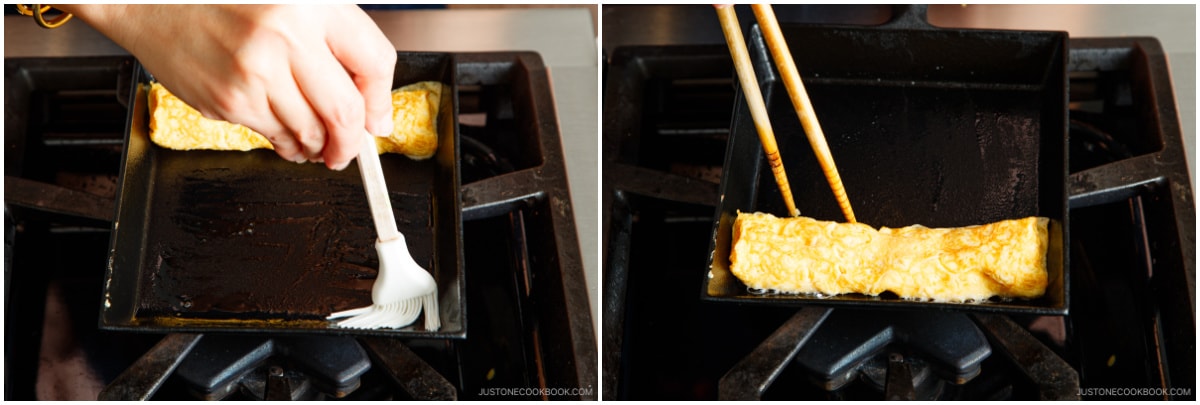
- Cook the second layer. Lightly grease the front side of the pan. Use the sizzle test to see if the oil is hot enough. When the pan is ready, pour a second thin layer of the egg mixture to just cover the entire cooking surface.
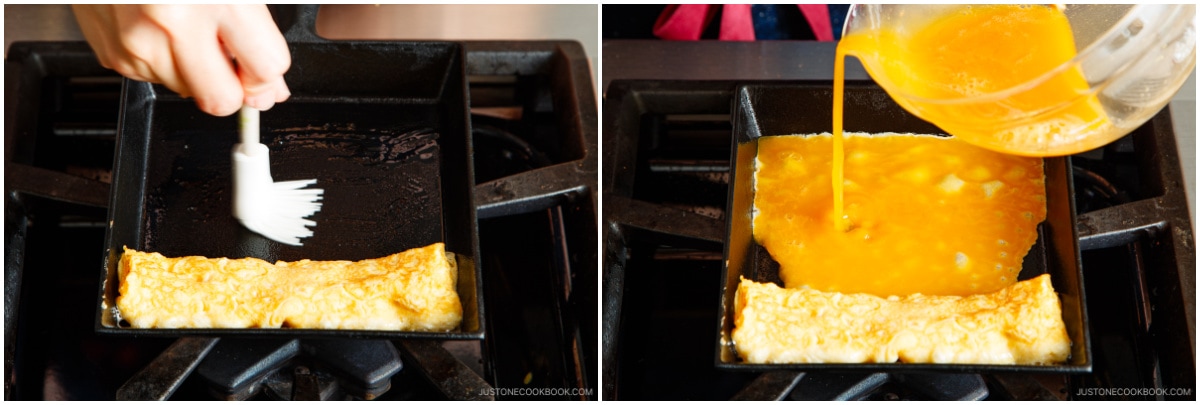
- Lift the omelette so the runny egg mixture goes underneath it. Pop the air bubbles and tilt the pan again to distribute the egg mixture evenly.
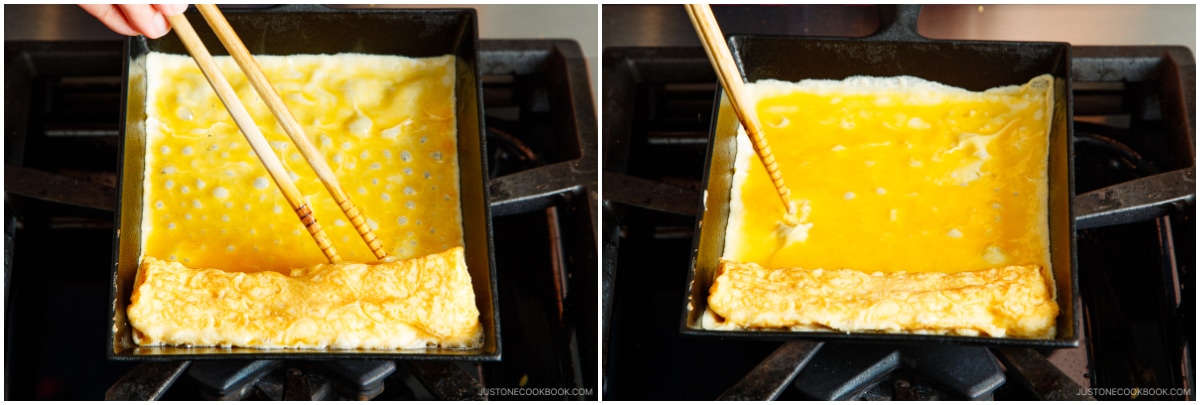
- As soon as the new layer of egg is set on the bottom and still soft on top, continue rolling the omelette from one side to the other into a log shape. Use a spatula if needed. Tip: Control the temperature by lifting the frying pan rather than adjusting the stove heat. If the heat is too weak, the egg will stick to the frying pan, so be careful.
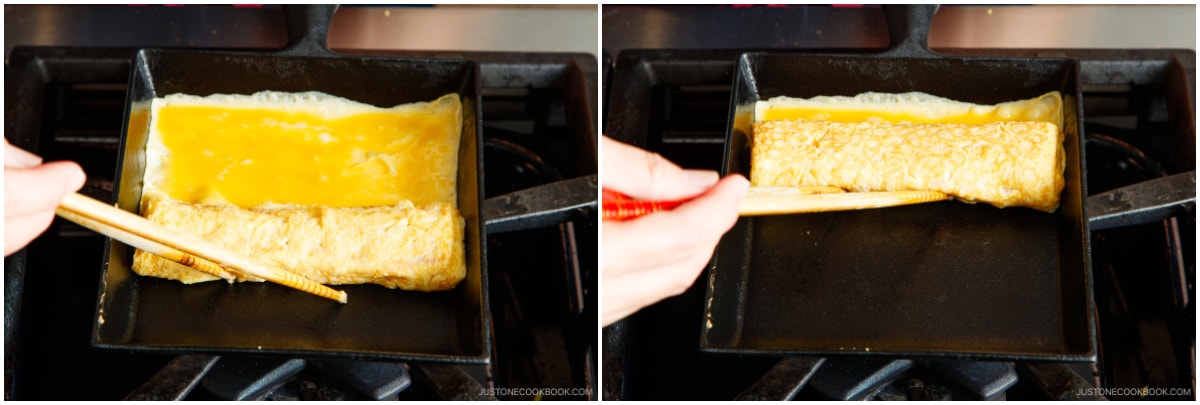
- Once again, lightly grease the far side of the pan, push the omelette to the far side, and grease the front side.
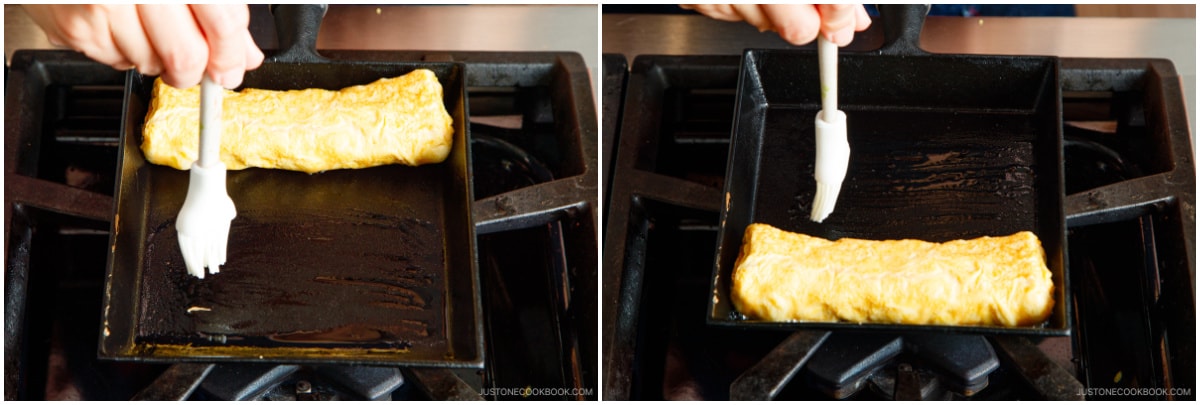
- Cook the third layer. Check that the oil is hot enough. When the pan is ready, pour the third portion of egg. Lift the omelette so the runny egg goes underneath it.
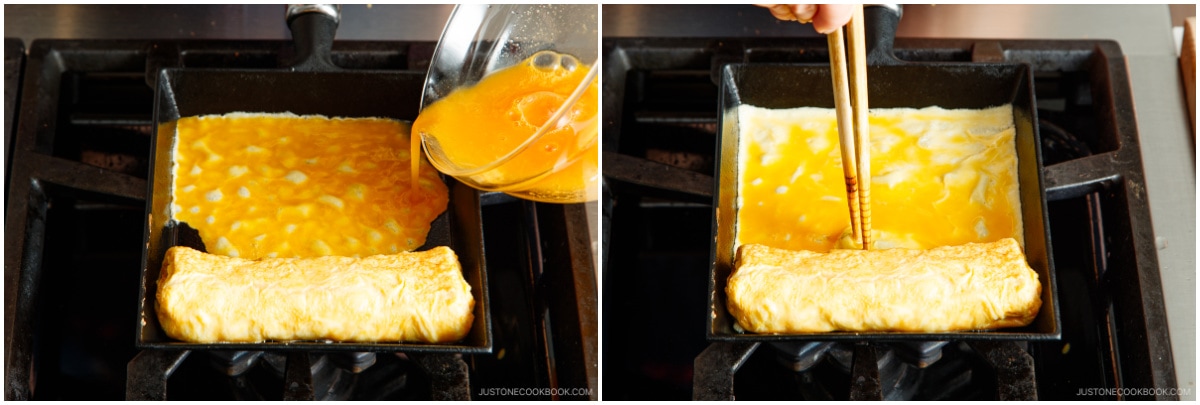
- When the egg is set on the bottom and soft on top, roll the omelette.
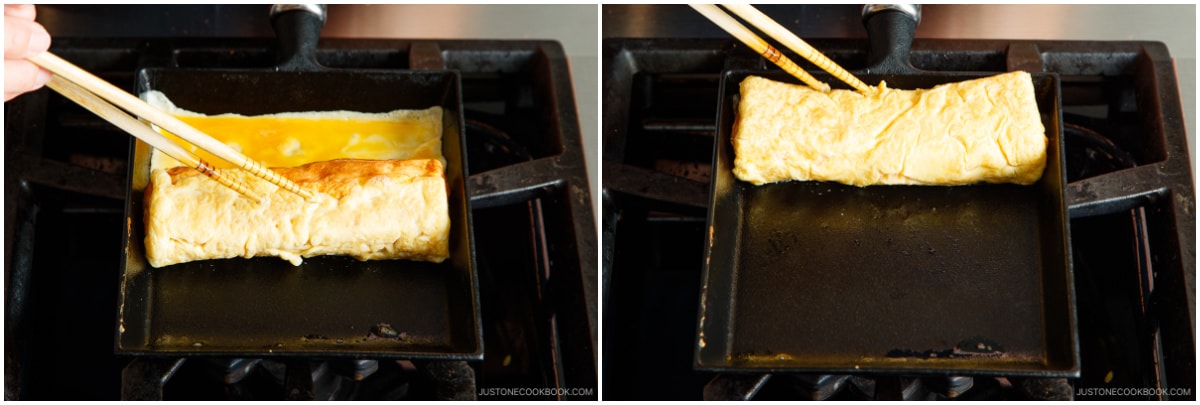
- Grease the far side of the pan, move the roll to the far side, and grease the front side.
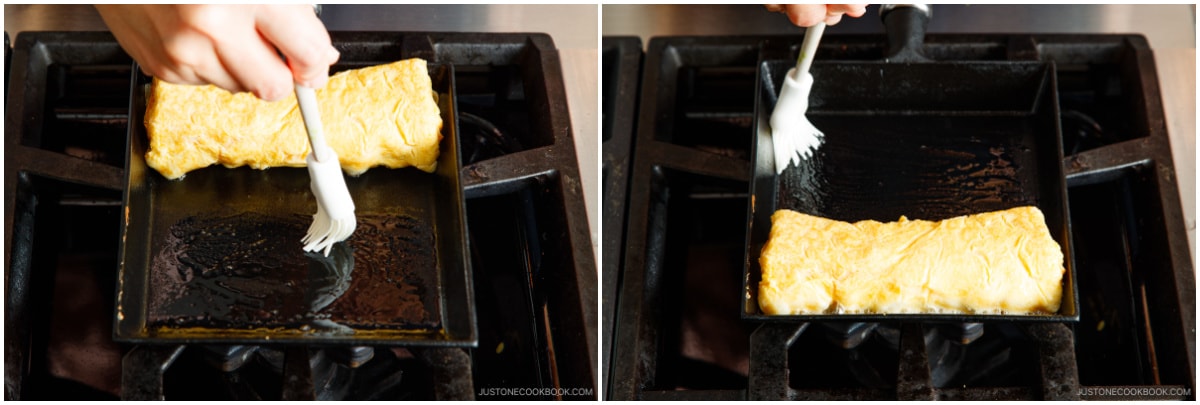
- Cook the final layer. Check that the pan is hot enough, then pour the final thin layer of egg mixture. Lift the omelette so the runny egg goes underneath it.
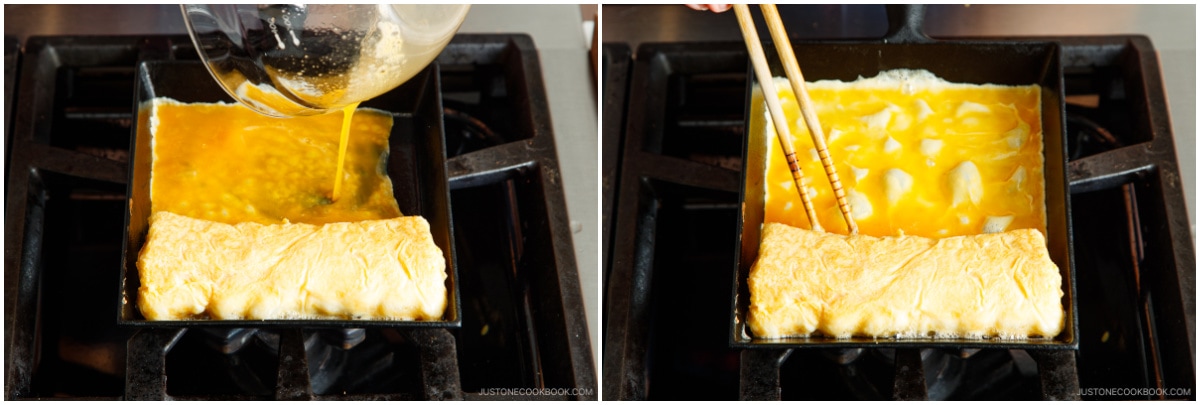
- When the egg is no longer runny, roll the omelette.
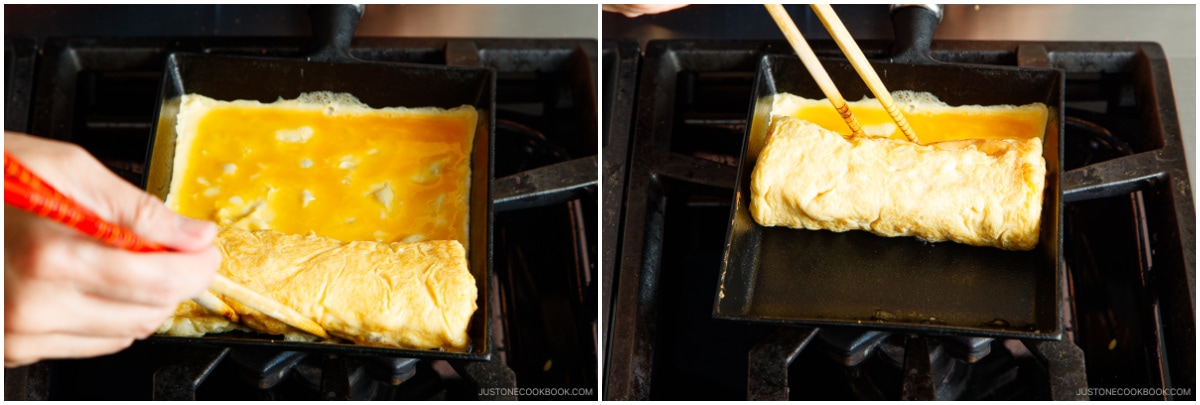
- Once you‘re finished rolling, press down on the omelette to flatten. Push it against the sides of the pan to shape it into a nice rectangular block. You can brown the omelette a bit, to your preference.
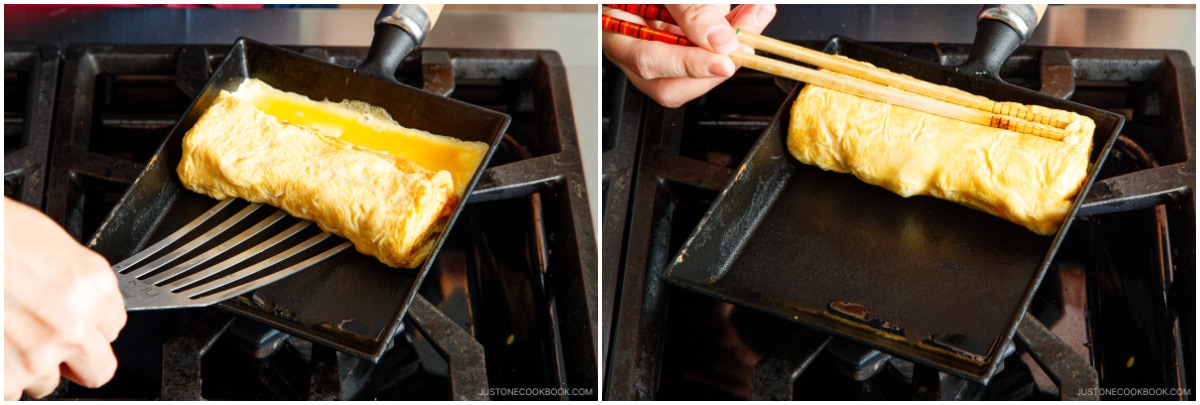
- Transfer the Tamagoyaki to a cutting board. To help set its shape, wrap the Tamagoyaki with a bamboo sushi mat (optional) while it’s still hot. Let it stand for 5 minutes (optional) to allow the residual heat to finish cooking the egg and to cool slightly.
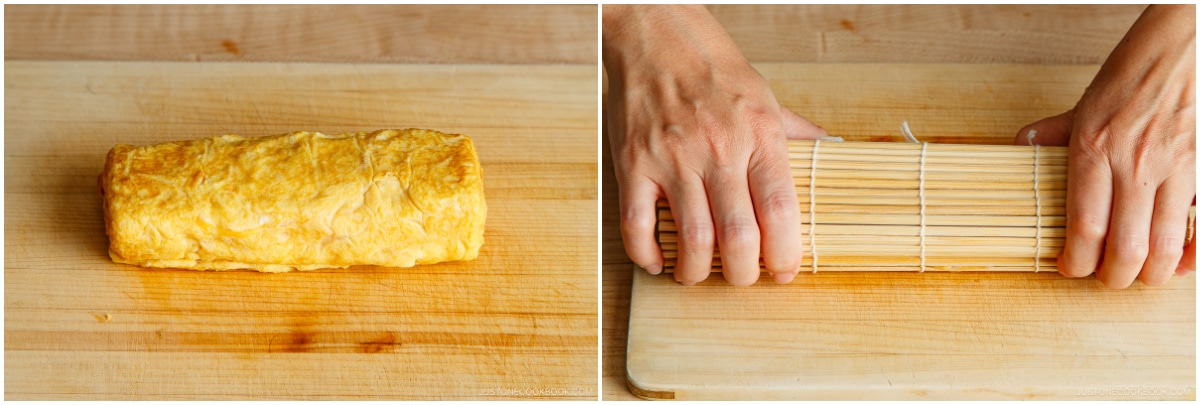
To Serve
- To serve, cut the Tamagoyaki in half crosswise, then cut each half into thirds. Enjoy!
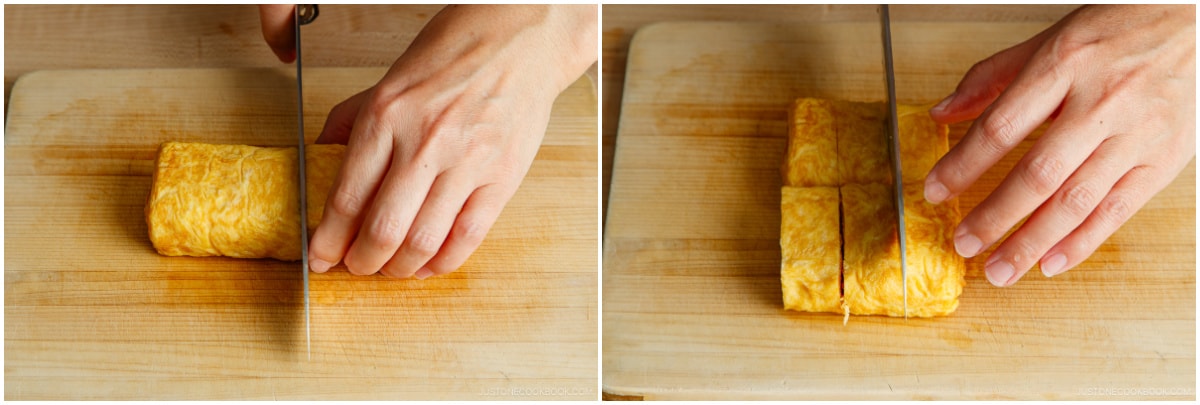
To Store
- You can put the Tamagoyaki in an airtight container and store it in the refrigerator for 2–3 days and in the freezer for up to 2 weeks. Defrost overnight in the refrigerator or microwave.
To Cook in a Round Frying Pan (Method 2)
- Cook the first layer. Heat a round medium frying pan (I use this 10¼" carbon steel pan) over medium heat. Dip a silicone brush or folded paper towel in neutral oil and apply a thin layer to the pan. Wait until the oil gets hot enough. To check, use the “sizzle“ test: Put a drop of the egg mixture in the pan; if you hear a sizzling sound, the pan is ready.
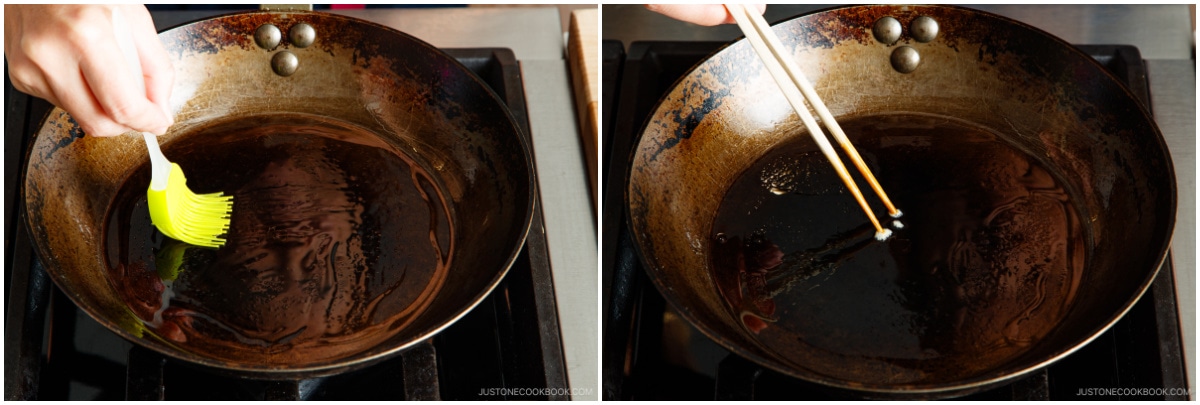
- Pour in a thin layer of egg mixture. Quickly tilt the pan to coat the entire cooking surface with egg. Add just enough to fill the pan and don‘t overpour. For my pan size, I had enough to cook 3 thin layers of egg mixture; you may have more or fewer layers, depending on your pan size. Next, pop any air bubbles (I use cooking chopsticks). Tilt the pan again to distribute the egg mixture evenly.
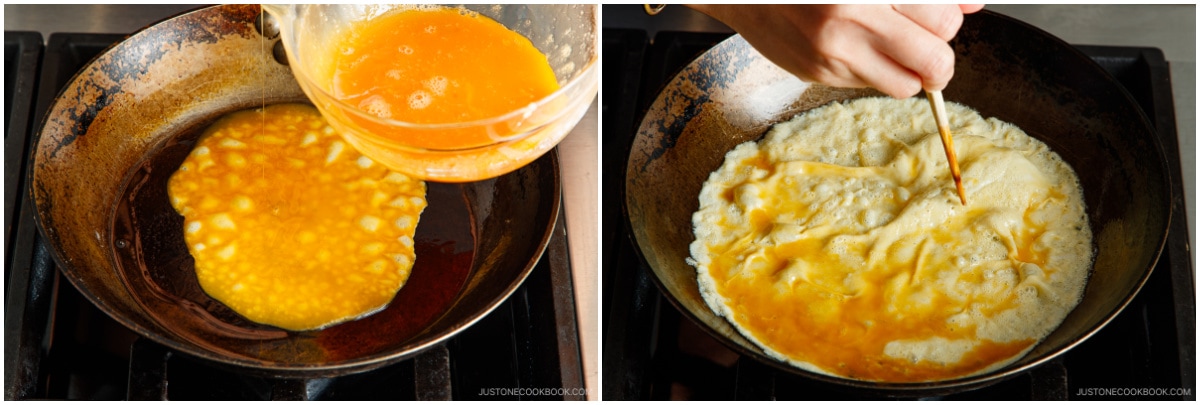
- When the bottom of the egg has set but the top is still soft, use a spatula to fold over the left and right sides toward the center to make a rectangular shape. Then, roll the egg into a log shape. I started from the pan handle side and rolled toward the far side of the pan. Don‘t worry about making a perfect roll at this stage.
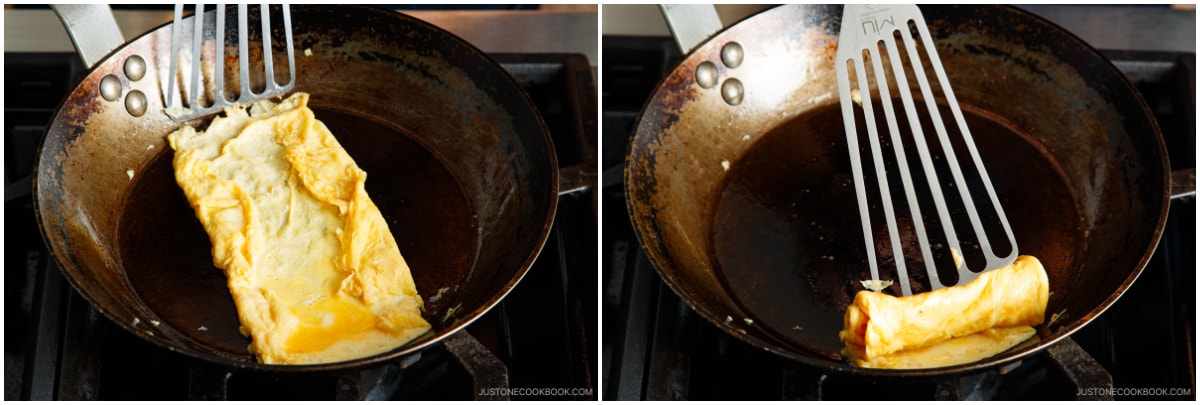
- Cook the second layer. Leave the rolled omelette on the far side. Lightly grease the pan, including underneath the omelette. Use the sizzle test to check if the oil is hot enough. When the pan is ready, pour a second thin layer of the egg mixture to cover the entire cooking surface. Lift the omelette so the egg mixture goes underneath it.
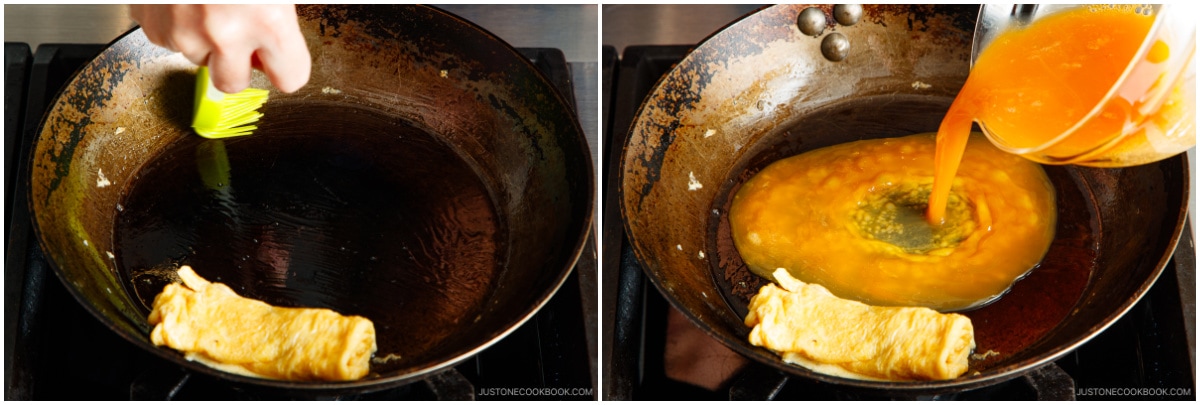
- Pop the air bubbles and tilt the pan again to distribute the egg mixture evenly. When the bottom of the egg has set but the top is still soft, fold the sides toward the center to the same width as the omelette. Roll the omelette into a log shape.
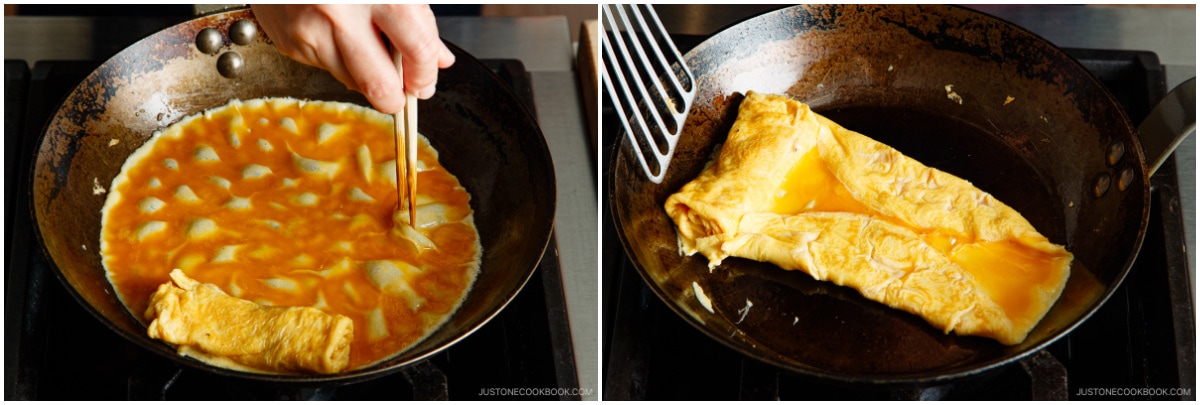
- Lightly grease the pan again and use the sizzle test to check if the oil is hot enough.
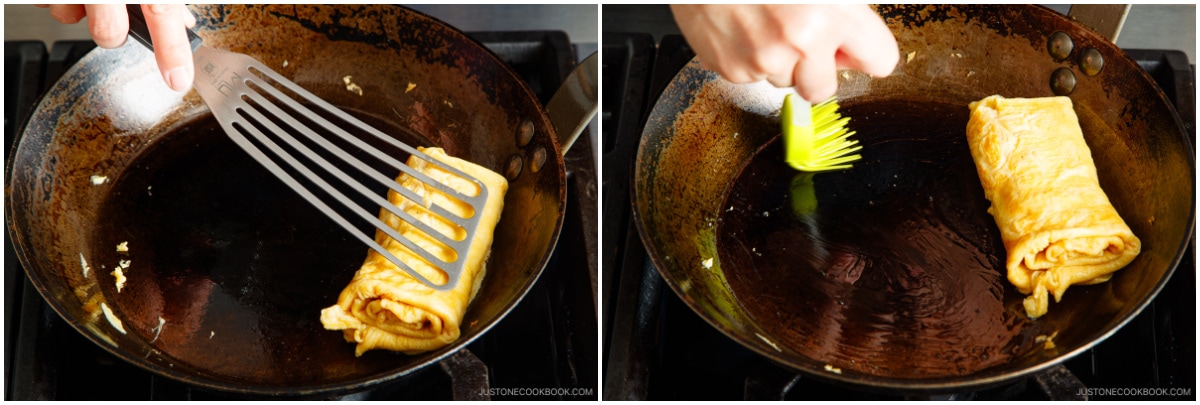
- Cook the final layer. When the pan is ready, pour a final thin layer of the egg mixture to cover the entire cooking surface. Lift the omelette so the egg mixture goes underneath it. When the egg is no longer runny, fold the sides toward the center and roll the omelette into a log shape.
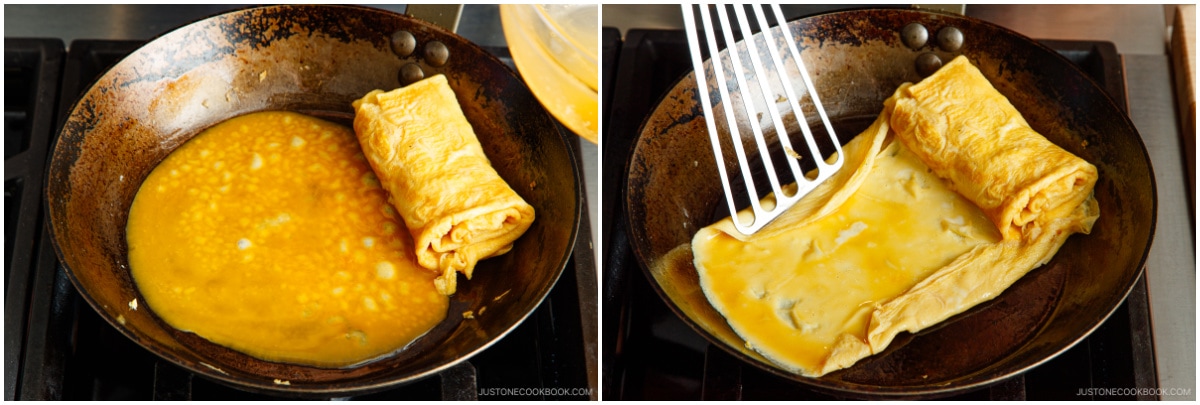
- Press down on the Tamagoyaki to flatten. You can brown the omelette a bit, if you‘d like. Remove from the pan onto the cutting board. To help set its shape, wrap the Tamagoyaki with a bamboo sushi mat (optional) while it’s still hot. Let it stand for 5 minutes (optional) to allow the residual heat to finish cooking the egg and to cool slightly. To serve, cut the Tamagoyaki in half crosswise, then cut each half into thirds. Enjoy!
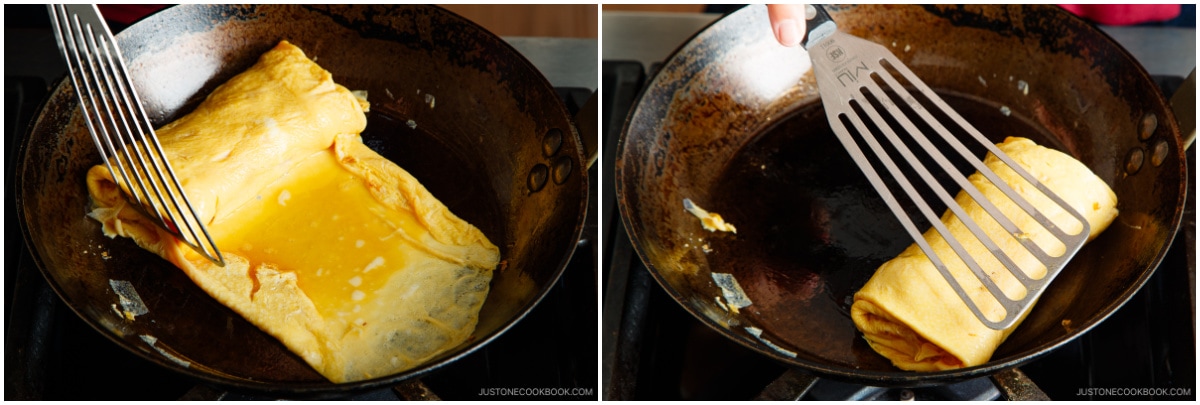
Nutrition
Calories: 162kcal, Carbohydrates: 4g, Protein: 10g, Fat: 12g, Saturated Fat: 3g, Polyunsaturated Fat: 4g, Monounsaturated Fat: 4g, Trans Fat: 0.1g, Cholesterol: 279mg, Sodium: 309mg, Potassium: 104mg, Sugar: 3g, Vitamin A: 405IU, Calcium: 42mg, Iron: 1mg